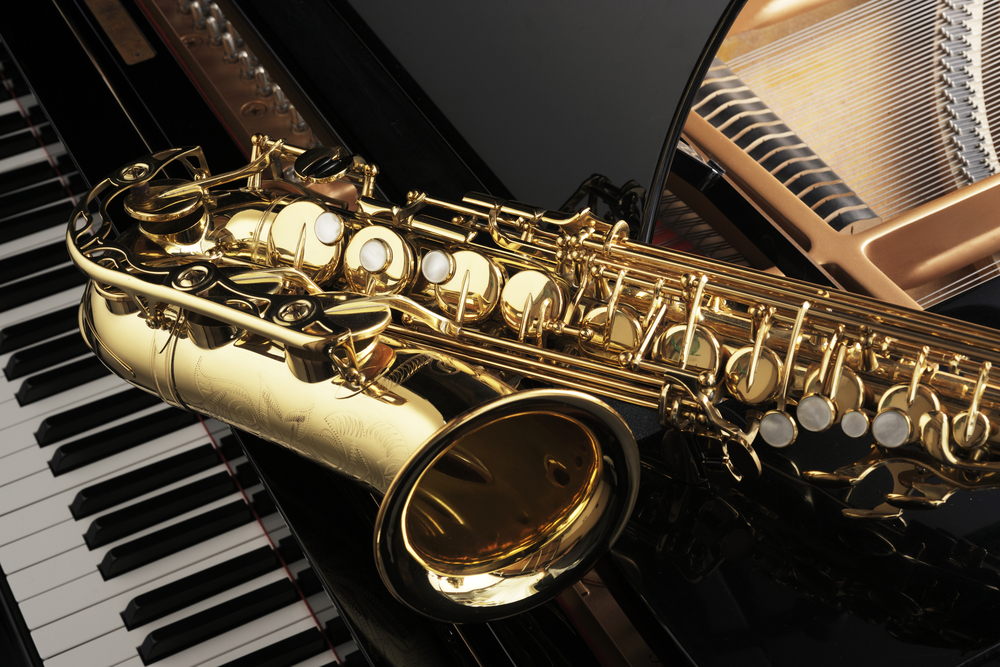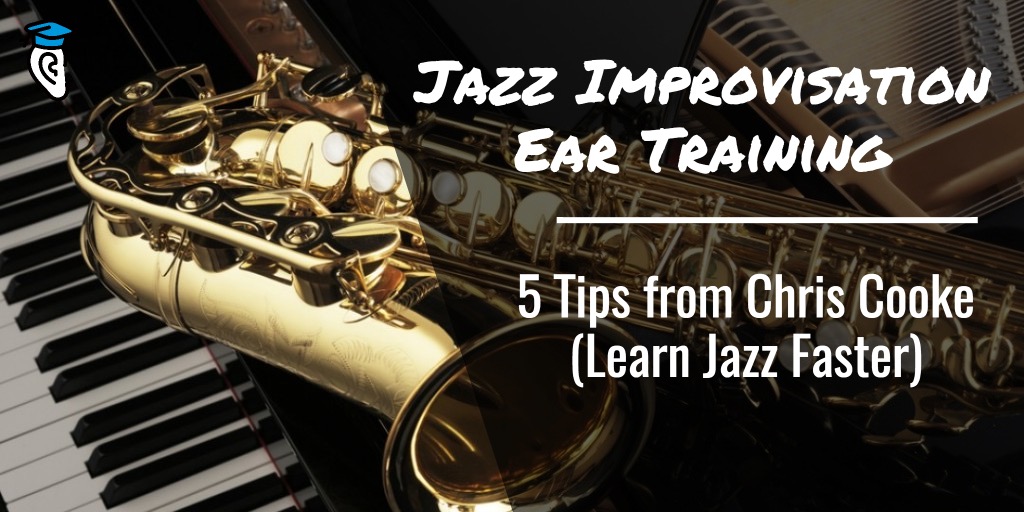When we reached out to Chris Cooke of Learn Jazz Faster to ask him his advice for our recent guide on starting jazz improvisation ear training he shared five excellent tips. We gave just a preview before – read on to discover his full advice! Over to you, Chris…
 The first and perhaps most important thing for any musician to do is to understand that music is an artform of the ear.
The first and perhaps most important thing for any musician to do is to understand that music is an artform of the ear.
Music doesn’t come from your fingers, hands, strings, mouthpieces, lips, sticks, picks or anything else external. You make music with your ear.
There’s this misconception in jazz that ear training is just one separate part of your practicing. I think that’s wrong. All of your musical activities can and should serve the ear. Even technical exercises and music theory.
If you’re a beginner improviser, you’re actually in a great place.
You see, many cats let their physical and theoretical chops get way ahead of their ears. This presents a big problem. In order for these cats to “play what they hear” they must check their egos at the door and play very simple ideas. Much more simple than the modern, complex and hip ideas they want to be playing!
”Many cats let their physical and theoretical chops get way ahead of their ears. This presents a big problem.”
But the ear is the gateway to your musical personality and identity. It’s the source of your self-expression and creativity.
Developing your musical ear is your most important priority.
There are many ideas, exercises and resources available on this site alone that can help you get your ears together.
I would simply choose an exercise or module that you feel you need right now. And then work on it until you really get it.
Follow through is the key to musical success.

Beyond all of the time-tested ear training methods that can be incorporated into your regular daily practice, here are 5 other tips to help you get your ears in shape:
1. Listen to music you love.
Listen a lot. Not just in the car or while you do your chores! Listening is not a luxury. The best players are the best listeners.
”The best players are the best listeners.”
Schedule dedicated listening sessions into your daily practice. Listen as deeply and as attentively as you possibly can during these sessions. Always assume you could be hearing more detail in the music. Because you always can!
Focus on one aspect of the music at a time. For instance: Tone or Time or Dynamics, etc.
Stick with one record, track, solo (or even just one phrase) for awhile and really get to know it intimately.
2. Learn the music you love.
Don’t worry about learning every detail from beginning to end. Learn bits and pieces of the music you love by ear from the recording.
Completely internalize these bits and pieces with as much detail as possible until you can hear and play them auto-magically without thinking.
”Regularly assimilate music that you dig and make it into your own vocabulary.”
If you’re just starting out, don’t choose Coltrane or Wes Montgomery. Find something that you can actually wrap your ears around. Start with just two notes if that’s what you can hear. But start somewhere and regularly assimilate music that you dig and make it into your own vocabulary.
3. Record and Critique yourself daily.
Record something and listen back – five times or more.
It could be a solo over a tune. It could be free improvisation. It could be a melody you’re working on, a rhythm, a lick or even a scale pattern.
Over time this will help you develop your musical awareness so that you are more aware of what you’re playing, in the moment.
It took me years before I listened to this advice (from my mentor Hal Crook) and formed a regular habit of recording and critiquing. But when I did I saw dramatic changes in my playing in just a few weeks.
It’s so powerful. It’s way more important than that long laundry list of stuff on your practice routine. Cut out at least half of all that technical stuff and start working on your ears.
It doesn’t matter where you are in your journey. Record yourself daily.
4. Trust your Ears more than your Brain.
Remind yourself on a daily basis that your thinking brain is far inferior to your ears when it comes to improvising and playing music. Meditate on this fact.
When you find yourself thinking while improvising (and you will, if you’re human) just notice it, acknowledge its inferiority, and let it go.
If you can’t play the material without thinking then it’s too hard for where you are in your musical journey. Simplify.
Here’s an example: Improvise over one chord with one rhythm and two notes.
Simplify down to the point that you can easily play and easily let your ear guide that playing. If you ignore this advice and continue to let your technique get ahead of your ears you’re gonna get yourself into a frustrating situation. (ask me how I know!)
5. Follow Your Ear
Practice letting your ear guide your playing while improvising. This means you’ll have to keep it simple.
You can try playing completely free to experience this: that means no form, no time, no meter, no rules.
Or, you can simplify the context you’re improvising on to experience this: play on just one chord, use just one or two notes, use a preset rhythm, slow it down, play each chord for four bars instead of one, etc.
Do anything it takes to find “the edge of your ability”. That place where it’s challenging – but doable.
It will take time. But if you do follow all 5 of these steps on a regular basis you will radically transform your playing.
Thanks, Chris, for these excellent jazz improvisation tips. If we all just took a step back, simplified our playing, and trusted our ears, the musical world would be a better place – and much more enjoyable and satisfying for us players too! If you want to continue learning about jazz improvisation ear training head on over to Chris’ site, LearnJazzFaster.com.


 Click to tweet
Click to tweet





